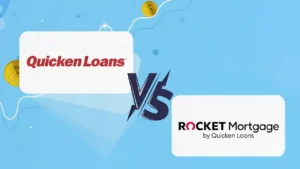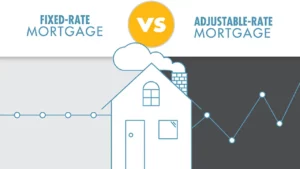Mortgagerateslocal.com – If you are thinking of selling or buying a home, you may have heard of two options: loan assumption and refinance. But what are they, and how do they differ? And more importantly, which one is better for you?
Loan assumption is when you take over the existing mortgage of the seller, with the same interest rate and terms. Refinance is when you apply for a new loan with a different lender, with a new interest rate and terms.
Both loan assumption and refinance have their pros and cons, depending on your situation. In this blog post, we will explain everything you need to know about them. We will compare their benefits and drawbacks, and help you decide which one suits your needs best.
We will also provide some tips and resources to help you with the process. Whether you choose loan assumption or refinance, you want to make sure you get the best deal possible.
What is Loan Assumption and Refinance?
Loan assumption is when a homebuyer takes over the existing mortgage of the seller. This means that the buyer inherits the same loan terms, interest rate, balance, and repayment period as the seller. The buyer does not have to apply for a new loan, but they still have to qualify for the existing loan and pay a fee to the lender.
Loan assumption is possible for some types of mortgages, such as FHA, VA, and USDA loans. However, not all lenders allow loan assumption, and some may have strict requirements and conditions. Therefore, it is important to check with the lender before assuming a loan.
Refinance is when a homeowner replaces their existing mortgage with a new one. This means that the homeowner pays off their old loan with a new loan, which may have different terms, interest rate, balance, and repayment period. The homeowner has to apply for a new loan, and pay closing costs and fees to the lender.
Refinance is possible for any type of mortgage, as long as the homeowner qualifies for the new loan and can afford the costs. Refinance can be done for various reasons, such as lowering the interest rate, changing the loan type, shortening or extending the loan term, cashing out equity, or consolidating debt.
Loan Assumption vs Refinance: Pros and Cons
Now that we have defined what loan assumption and refinance are, let’s compare their pros and cons.
Pros of Loan Assumption
- Loan assumption can save you money on interest, especially if the existing loan has a lower interest rate than the current market rate. For example, if the seller has a 30-year fixed-rate mortgage at 3%, and the current market rate is 4%, the buyer can save 1% on interest by assuming the loan.
- Loan assumption can also save you money on closing costs and fees, which are typically lower than those of refinance. For example, if the seller has a $200,000 loan balance, and the closing costs and fees of refinance are 3% of the loan amount, the buyer can save $6,000 by assuming the loan.
- Loan assumption can speed up the home buying process, as it does not require a new appraisal, title search, or underwriting. This can also reduce the risk of the deal falling through due to low appraisal, title issues, or loan denial.
Cons of Loan Assumption
- Loan assumption may require a large down payment, as the buyer has to pay the difference between the purchase price and the loan balance. For example, if the seller has a $200,000 loan balance, and the buyer agrees to pay $250,000 for the home, the buyer has to pay $50,000 as a down payment.
- Loan assumption may limit your choices of homes, as not all homes have assumable mortgages, and not all lenders allow loan assumption. You may have to search harder to find a home that meets your criteria and has an assumable loan.
- Loan assumption may not change the loan terms, which may not suit your needs or preferences. For example, if the seller has a 30-year fixed-rate mortgage, and you prefer a 15-year adjustable-rate mortgage, you cannot change the loan type by assuming the loan.
Pros of Refinance
- Refinance can lower your interest rate, if the current market rate is lower than your existing rate. This can save you money on interest and lower your monthly payment. For example, if you have a $200,000 loan balance at 4%, and you refinance to a new loan at 3%, you can save $68 per month and $24,448 over the life of the loan.
- Refinance can also change your loan terms, which may suit your needs or preferences better. For example, if you have a 30-year fixed-rate mortgage, and you want to pay off your loan faster, you can refinance to a 15-year fixed-rate mortgage. This can save you money on interest and build equity faster.
- Refinance can also allow you to cash out some of your home equity, which you can use for various purposes, such as home improvement, debt consolidation, or education. For example, if you have a $200,000 loan balance, and your home is worth $300,000, you can refinance to a new loan of $250,000, and receive $50,000 in cash.
Cons of Refinance
- Refinance can cost you money on closing costs and fees, which are typically 2% to 5% of the loan amount. For example, if you have a $200,000 loan balance, and the closing costs and fees of refinance are 3% of the loan amount, you have to pay $6,000 to refinance.
- Refinance can also extend your loan term, if you refinance to a new loan with a longer repayment period. This can increase your total interest cost and delay your loan payoff. For example, if you have a $200,000 loan balance with 20 years left, and you refinance to a new 30-year loan, you will pay $33,247 more in interest and take 10 more years to pay off your loan.
- Refinance can also affect your credit score, as it involves a hard inquiry and a new loan account. This can lower your credit score temporarily and affect your ability to qualify for other loans or credit cards.
How to Decide Between Loan Assumption and Refinance?
As you can see, loan assumption and refinance have their own advantages and disadvantages. The best option for you depends on your situation and goals. Here are some questions to help you decide:
- What is the interest rate of the existing loan, and how does it compare to the current market rate? If the existing rate is lower, loan assumption may be better. If the current rate is lower, refinance may be better.
- How much is the loan balance of the existing loan, and how does it compare to the purchase price of the home? If the loan balance is close to the purchase price, loan assumption may be better. If the loan balance is much lower than the purchase price, refinance may be better.
- How much can you afford to pay as a down payment, closing costs, and fees? If you have enough cash to pay a large down payment, loan assumption may be better. If you have enough cash to pay the closing costs and fees, refinance may be better.
- How long do you plan to stay in the home? If you plan to stay for a long time, loan assumption or refinance may be better, depending on the interest rate and loan terms. If you plan to stay for a short time, loan assumption may be better, as it can save you money on closing costs and fees.
- What are your financial goals and preferences? If you want to save money on interest, pay off your loan faster, or cash out some equity, refinance may be better. If you want to keep the same loan terms, lower your monthly payment, or speed up the home buying process, loan assumption may be better.
Tips and Resources for Loan Assumption and Refinance
If you decide to go for loan assumption or refinance, here are some tips and resources to help you with the process:
- For loan assumption, check with the lender if the loan is assumable, and what are the requirements and conditions. You may need to provide proof of income, assets, credit, and debt. You may also need to pay an assumption fee, which is usually 0.5% to 1% of the loan amount.
- For refinance, shop around for the best refinance rates and terms. You can use online tools and calculators to compare different refinance options and costs. You may need to provide the same documents as for a new loan application, such as income, assets, credit, and debt. You may also need to pay the same closing costs and fees as for a new loan.
- For both loan assumption and refinance, consult a professional, such as a real estate agent, a mortgage broker, or a financial planner. They can help you evaluate your situation and goals, and advise you on the best option for your situation and goals. They can also help you with the paperwork and negotiation.
Conclusion
Loan assumption and refinance are two options that you can consider when selling or buying a home. They have their own pros and cons, and the best option for you depends on your situation and goals. We hope that this blog post has helped you understand the difference between loan assumption and refinance, and how to decide which one is better for you.




